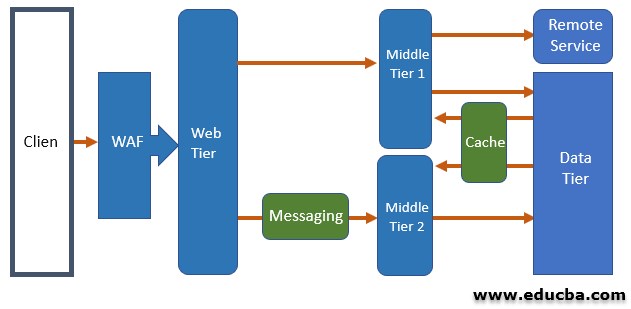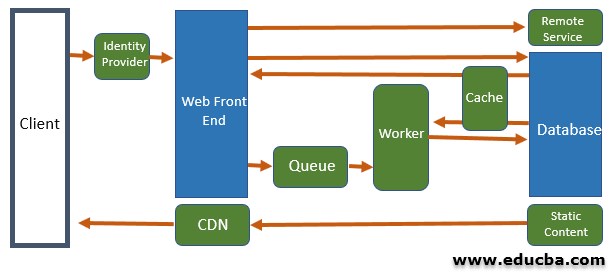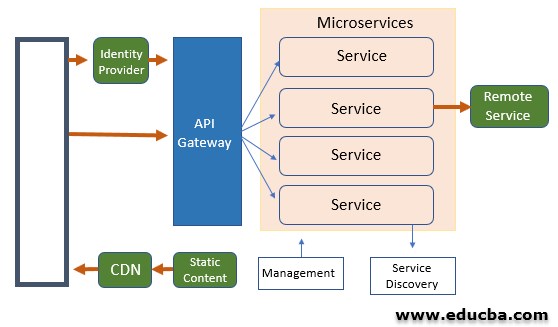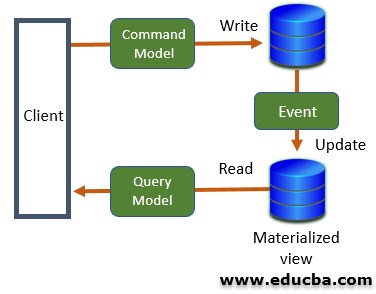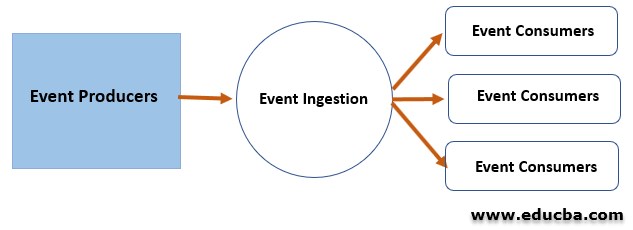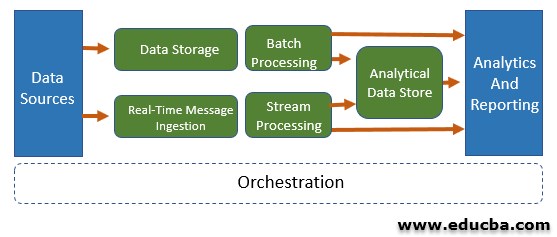Updated March 4, 2023
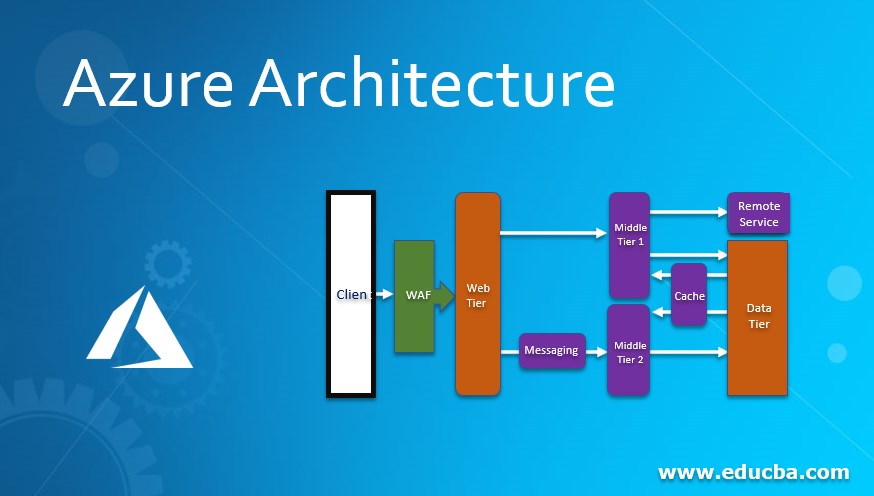
Introduction to Azure Architecture
If the computer hardware is emulated in software, it is called virtualization, and Microsoft Azure is based on this technology in which the hardware instructions are emulated by mapping of software instructions, this way, virtualized hardware can perform functions like “real” hardware by the use of software and the architecture of Microsoft azure is run on a server collection which is huge and networking hardware which are capable of hosting a collection of applications that are complex and can control the software operation and configuration on these servers.
Architecture of Azure
The different architecture styles of azure architecture are explained as below:
1. N-tier architecture
The diagram below shows the N-tier architecture in Microsoft azure.
N-tier architecture is used in enterprise applications because it is a traditional architecture. The application is divided into layers, and each layer performs logical functions like logic used in business etc. and this way, the dependencies are managed. But there is one liability, that is the horizontal layer. If we want to make changes in any one part of the application, we will have to make some changes in the other part of the application too. Hence there are challenges of updates frequently, and new features cannot be added easily. If we would like to migrate the existing applications, which is based on the architecture that is layered, then N-tier architecture is a good fit.
2. Web queue worker
The diagram below shows the web queue worker architecture in Microsoft azure.
The application using this style of architecture consists of a front end to handle the HTTP requests and a back end to perform operations that are CPU intensive. An asynchronous message queue is used for communication between the front end and the back end. This style of architecture is suitable for simple tasks that are based on resources. Deployment and operations are simplified by using managed services. But it is difficult to manage the dependencies if the domains are complex. With complex domains, the maintenance and update for the front end and backend become difficult.
3. Microservices Architecture
The diagram below shows the Microservices architecture in Microsoft azure.
A lot of small yet independent services constitute microservices architecture. Single business capacity is implemented by each service. The services communicate through contracts of API, and they are coupled loosely. A focused development team can build a service. Coordination among the teams is necessary to build individual services, and frequent updates are encouraged. Microservice architecture building is complex when compares to other architectures like N-tier and web queue worker. Good development and culture of devops are necessary to build a microservices architecture. But if the microservices architecture is built in the right manner, this architectural style results in higher velocity and quicker innovation.
4. Command and Query Responsibility Segregation Architecture
The diagram below shows the CQRS architecture in Microsoft azure.
The operations of reading and writing are segregated into two different models by Command and Query Responsibility Segregation Architecture. As a result, the part of the system that writes the data or updates the data is separated by the part of the system that reads the data. Also, the write operation is performed on a separate database, and the read operation is performed against a materialized view. This helps in performing the read and write operations independently, and the materialized view can be optimized for queries. The Command and Query Responsibility Segregation Architecture make a good subset of some larger architecture because when it is applied to an application, the entire architecture becomes complex. When the same data is to access by any number of users, Command and Query Responsibility Segregation Architecture can be considered for collaborative domains.
5. Event-Driven Architecture
The diagram below shows the Event-driven architecture in Microsoft azure.
Event-driven architecture follows a publish-subscribe model, which is also called the pub-sub model. In this model, events are published by producers, and they are subscribed by the consumers. The producers and consumers are independent of each other, and the consumers are independent of each other. Consider, for example, IoT solutions application which processes a very large volume of data and has very low latency; then, event-driven architectures are very useful. This architecture is also useful when there is the same event data, and different subsystems are performing different sorts of processing on this same event data.
6. Big Data, Big Compute Architecture
The diagram below shows the Big data, Big Compute architecture in Microsoft azure.
Some profiles fit only particular types of architectures, and one such architecture is big data, big compute architecture, which is one of the special architectures for fitting profiles of certain types. A very huge dataset is divided into chunks by Big data for processing the data in parallel and for reporting and analysis. Big compute is also called high-performance computing (HPC), is used to perform computations in parallel for thousands or a greater number of cores. Simulations, three-dimensional rendering, modeling, etc., are the domains of big computing.
Conclusion
In this tutorial, we understand the concept of anagrams through definitions and examples. And then understand the algorithm to check if the given two input strings are anagram or not. Then we understand different C program types to check if the given strings are anagram or not, along with their output’s snapshots after execution.
Recommended Articles
This is a guide to Azure Architecture. Here we discuss the different architecture styles of Azure Architecture and also understand different C program types. You may also have a look at the following articles to learn more –
